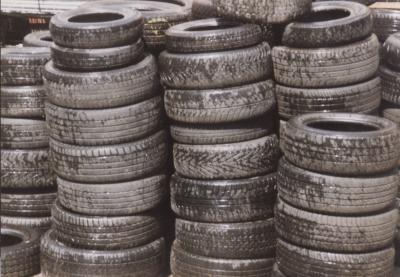The Committee’s Chairman Max Craipeau of China-based Greencore Resources Ltd said the BlackCycle research project co-ordinated by major producer Michelin had the potential to “revolutionize” ELT recycling at a time when the key crumb rubber market was under severe threat. If successful, it could mean that, in five to six years from now, around half of Europe’s ELTs would be incorporated as secondary raw materials into new tyres, he added.
According to Michaël Cogne, Research Programme Manager for BlackCycle at Michelin, the Euro 16 million project had started earlier this year and was relying on a multi-pronged approach, including mechanical methods to deconstruct tyres so as to gather different clusters of materials as input for pyrolysis in order to achieve specific outputs. The intention was also to address recovered carbon black and pyrolytic oil in parallel “to find the best way to valorize everything to a good level of performance”. Chemical competencies would be used to refine oils to create a desirable feedstock for the manufacture of carbon black, he added.
The project has brought together seven industrial partners, five research and technological organizations, and an innovation cluster. Their specialisms span: tyre collection; granulation; pyrolysis; transformation of pyrolytic oil into more valuable materials; carbon black manufacture; life-cycle analysis; environmental assessment along the value chain; data management; and communications. “With the full value chain, you have a good chance to valorize all the outputs” for use in “high-value applications”, said Mr Cogne. The research had the potential to be a “game-changer” for used tyres, he contended.
Mr Craipeau particularly welcomed the fact that current elements of the ELT recycling chain – such as collectors, granulators and tyre deconstructors – would “still have a major role to play in the industry as providers of added-value feedstock”. This would apply even to small and medium-sized recyclers, enabling them to continue to use existing equipment.
Webinar panellist Martin von Wolfersdorff, a carbon black and recovered carbon black expert at Wolfersdorff Consulting of Berlin, praised the BlackCycle recycling objectives as exceeding Michelin’s initial Vision 2048 goals. He estimated a recovered carbon black production of around 400,000 tonnes per annum and a sustainable carbon black production of some 80,000 tonnes per annum by 2030 if every second European tyre were recycled in the BlackCycle system. Mr Von Wolfersdorff was also impressed by the “all-star cast” gathered by Michelin, as well as by the “deep integration” of the research venture.
The webinar participants acknowledged that the emergence of this potentially huge outlet for ELTs was particularly well-timed given the regulatory storm clouds currently gathering over the main outlet for crumb rubber use as infill for sports pitches, a topic discussed in greater depth at the BIR Tyres & Rubber Committee’s eForum in June this year. Speaking at the webinar, Mr Craipeau expressed the fear that a ban on infill “is on its way”.
In a brief market analysis, Mr Craipeau confirmed that the pandemic had dramatically reduced the number of vehicles on roads and therefore ELT arisings, forcing many recyclers to turn to their buffer stocks. On the demand side, COVID had curtailed the number of projects requiring crumb rubber, including the development of sports pitches.











